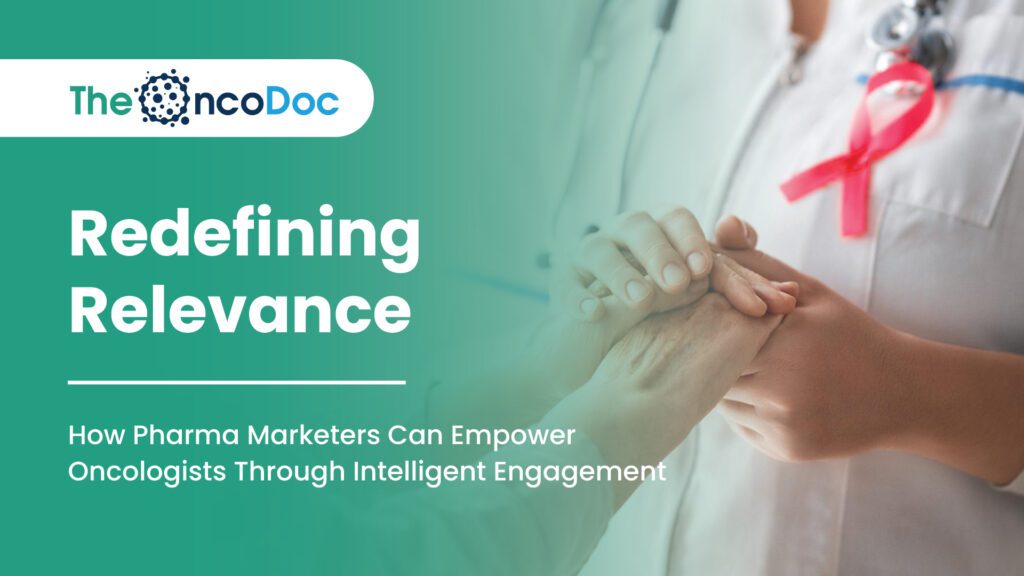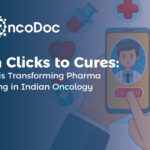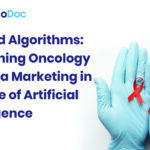Introduction: From Promotion to Precision in Oncology Communication
In the evolving realm of oncology, the challenge for pharma marketers is no longer just about being heard, it’s about being helpful. While digital transformation has opened powerful avenues of outreach, the oncology ecosystem, with its deep clinical complexity and emotional weight, demands a far more thoughtful approach.
Oncologists don’t want more emails, push notifications, or content, they want value. Value in the form of decision clarity, data contextualization, patient communication support, and time-saving clinical assets. As oncology becomes more data-driven, multidisciplinary, and personalized, pharma marketing must follow suit.
This article explores how brand managers and digital strategists can realign their marketing efforts to resonate with the true needs of today’s oncologists. Not by chasing metrics, but by enabling meaningful action, supporting care delivery, and ultimately improving cancer outcomes.
Section 1: Understanding the Modern Oncologist’s Digital Needs
Before building any campaign, pharma marketers must ask: What does an oncologist actually need from us digitally?
Unlike general practitioners, oncologists operate in a high-stakes clinical setting where time, evidence, and decision accuracy are paramount. Every click or message competes with patient rounds, treatment planning, and critical consults.
Key Insights into Oncologist Expectations:
- Relevance trumps volume: A single clinically useful tool is valued over 10 brand-heavy emails.
- Real-world context is crucial: Trial data must be translated to practical use cases.
- Trust is everything: Oncologists are skeptical of polished brand messages unless grounded in science.
- Time is scarce: They want micro-content that delivers macro-value, fast.
Actionable Strategy: Start with clinical empathy. Create from the viewpoint of the consulting oncologist, not the brand manager.
Section 2: Enabling Smarter Decisions with Contextual Tools
Clinical decisions in oncology often hinge on nuanced details, genetics, tumor biology, patient comorbidities, staging subtleties. Marketers can support this decision-making process by offering digital tools that are not just informative but also contextual.
High-Impact Tool Examples:
- Interactive Decision Trees: e.g., “First-line vs. Second-line Options for EGFR-mutated NSCLC.”
- Biomarker Matching Engines: Algorithms that suggest therapies based on available test results.
- Toxicity Management Dashboards: Visual alerts based on age, hepatic function, renal profile.
- Clinical Trial Match Portals: Region-specific filters to guide trial enrollment options.
Why It Works: Tools built around real-world complexity build trust and utility. They are seen not as promotions, but as clinical aids.
Pro Tip: These tools should be mobile-responsive and embeddable in EMRs or hospital platforms for seamless in-clinic usage.
Section 3: Indian Oncology Realities; A Call for Localization
Too often, pharma campaigns are imported wholesale from global templates. But India’s oncology landscape is vastly different, with regional disparities, resource constraints, and unique disease epidemiology.
Examples of Localization-Driven Marketing:
- Highlighting treatment outcomes in Indian patients.
- Curating real-world data from Tier 2 & 3 cities.
- Offering language-customized physician explainers.
- Enabling diagnostic linkage in low-access zones.
Digital Solution Opportunities:
- Region-based treatment pathways.
- Cost-effectiveness comparison tools.
- WhatsApp helplines in regional languages.
- Patient reimbursement explainer kits.
Message for Marketers: Go hyper-local. Relevance is regional in India.
Section 4: Beyond Education; Supporting Treatment Execution
Pharma brands must move past mere education and toward executional enablement, helping oncologists put theory into clinical practice.
Executional Touchpoints:
- Therapy Initiation Checklists: For complex agents like CAR-T or ADCs.
- Patient Identification Campaigns: Early screening in high-risk demographics.
- Digital Reminder Systems: Dosing reminders aligned with physician calendars.
- Hospital Workflow Integration: e.g., drug delivery timelines aligned with appointment cycles.
Mini Campaign Example:
For a breast cancer biosimilar, a digital-first campaign provided:
- Treatment-naïve patient checklists
- HCP-authored “Switch Protocols” for transitioning from reference biologics
- AI-generated peer benchmarks (e.g., % of peers already switched)
Result? 26% faster uptake and a 40% increase in oncologist confidence scores (measured via post-engagement surveys).
Lesson: Don’t just educate, equip. That’s what drives loyalty.
Section 5: Precision Content through Data-Driven Personalization
Blanket campaigns don’t work anymore. Oncology HCPs want to be treated like specialists, not segmented email IDs.
AI-Powered Personalization Approaches:
- Dynamic content blocks based on subspecialty (e.g., GI vs. thoracic oncology)
- Targeted updates based on prior clicks or interaction patterns
- Regional newsletters curated by local KOLs
- A/B testing based on practice type (academic vs. private)
Example:
An AI-personalized email series for a prostate cancer drug delivered:
- Targeted guideline summaries for uro-oncologists
- Cost-benefit models for private practice oncologists
- Nursing instruction kits for hospital pharmacists
Result: 3.5x higher email engagement and 2x follow-up queries to field reps.
The Takeaway: Data isn’t just for segmentation, it’s for personalization with purpose.
Section 6: Merging Field Force and Digital for Unified Impact
The most successful campaigns seamlessly blend field and digital touchpoints into a cohesive experience.
Unified Pharma Engagement Models:
- Digital follow-up triggered by rep visits (e.g., “As discussed with your rep, here’s the sequencing tool.”)
- Rep alerts triggered by HCP tool usage (“Dr. Shah used the side effect calculator 3 times this week, follow up?”)
- MSL-led virtual CME that continues discussions from field meetings
Digital + Human = Hybrid Success:
When one brand introduced a digital tool for lymphoma treatment pathways alongside rep detailing:
- 48% of oncologists reported using the tool in weekly patient consults.
- Reps reported a 3x increase in meaningful discussions post-campaign.
Lesson: Digital must amplify, not replace, human engagement.
Section 7: Empowering Patient Education Through Oncologists
Patient education remains one of the most underutilized opportunities in pharma marketing, particularly in oncology. While many campaigns focus on clinicians, they often miss the chance to equip oncologists with meaningful resources that support patient understanding and caregiver involvement. Oncologists frequently look for credible, non-promotional materials they can confidently share with their patients, tools that simplify complex treatment concepts and ease emotional distress.
Essential Digital Patient Resources:
- Regional-language videos explaining chemotherapy, immunotherapy, and targeted therapies in simple terms.
- Interactive WhatsApp chatbots offering round-the-clock FAQs for patients and caregivers.
- Printable diaries to track nutrition, symptoms, and side effects during treatment cycles.
- Myth-busting video series that address widespread misconceptions like “cancer is contagious” or “all chemotherapy causes hair loss.”
Why It’s Important:
- Helps oncologists play the role of both clinician and communicator, enhancing patient trust and engagement.
- Improves therapy adherence by ensuring patients are better informed and emotionally prepared.
- Fosters goodwill and long-term relationships between healthcare providers and pharma brands.
Case in Point:
A pharma-led initiative launched QR-code-enabled educational videos in six Indian languages. The results:
- 72% of patients accessed the content after their appointment.
- 58% of caregivers reported greater confidence in managing side effects at home.
Core Insight: Patient education should not bypass the oncologist. Instead, it should empower them to extend their care beyond the clinic. When pharma supports that mission, everyone benefits, from doctor to caregiver to patient.
Section 8: Real-World Evidence (RWE); From Observers to Contributors
In the modern oncology landscape, real-world evidence (RWE) is no longer a one-way stream of information. Oncologists today seek not only to access RWE but to actively shape it through their clinical experiences and treatment choices. This shift from passive consumption to participatory engagement is redefining how pharma brands should approach data-driven collaboration.
Next-Generation RWE Strategies:
- Mobile-friendly platforms that allow oncologists to share de-identified case studies quickly and securely.
- Interactive dashboards that display real-time comparisons of treatment protocols used by peers across regions.
· Digital tumor boards that compile and anonymize clinical data in order to identify trends and improve treatment plans.
- Dynamic practice surveys, or “Pulse Checks,” where participating oncologists can immediately view aggregated insights from their peers.
Real-World Campaign in Action:
To support the adoption of a novel treatment for metastatic renal cell carcinoma (RCC), one pharma company:
- Engaged 50 oncologists to anonymously submit clinical scenarios and outcomes.
- Compiled the data into a visual “Treatment Pattern Heatmap” showing variations across geography and practice type.
- Provided participants with a customized benchmarking report comparing their approaches to peers nationwide.
Outcome: Over 60% of respondents reported that the insights gained influenced their subsequent treatment decisions.
Key Takeaway: Oncologists want to be co-creators of clinical insight. Pharma brands that position themselves as enablers of collaborative knowledge, not just distributors of data, will earn deeper trust and drive meaningful change in cancer care.
Section 9: Building Enduring Trust Through Radical Transparency
In oncology, a field driven by scientific precision and life-altering decisions, trust is not optional; it’s foundational. Even a small deviation from accuracy or a hint of marketing spin can erode years of credibility. For pharma marketers, this means transparency must be non-negotiable and deeply embedded in every aspect of communication.
Principles for Ethical and Transparent Marketing:
- Clearly present side effects and risks alongside mechanism of action (MOA) visuals to ensure balanced information.
- Explicitly state regulatory status and approval timelines (e.g., DCGI, ICMR) to avoid confusion or false impressions.
- Reference peer-reviewed studies and real-world data rather than vague “data on file” claims.
- Feature testimonials and case insights from verified Indian oncologists, not generic spokespersons or actors.
Effective Trust-Building Content Formats:
- “Here’s What We Know / Here’s What We’re Still Learning” formats that present ongoing clinical research with humility.
- Transparent comparison charts showing where a product excels and where others might be more suitable.
- Patient journey videos that portray not just treatment success but also the emotional and physical side effects honestly.
In oncology, where decisions can mean the difference between remission and relapse, authenticity is the bedrock of all communication. Trust cannot be bought, it must be earned, consistently, over time. Pharma brands that embrace this ethos will not only gain the respect of oncologists but also secure a long-term role as reliable partners in the care journey.
Insight: In oncology marketing, transparency isn’t a strategy, it’s a standard.
Section 10: Measuring What Actually Matters
Impressions and CTRs are vanity metrics in oncology. Brands must use value-oriented KPIs in order to assess actual impact.
Recommended Metrics:
- Repeat usage rate of clinical tools (loyalty indicator)
- % of content saved/shared by oncologists
- Time-on-tool vs. time-on-site
- Sentiment analysis via qualitative surveys
- Uptake correlation in digital-first vs. rep-led zones
Example KPI Dashboard:
| Metric | Goal | Outcome |
| Decision Tool Usage | 2x/month/HCP | Achieved in 60% of users |
| WhatsApp Explainer Forwards | 1000 | Crossed 1800 in 3 months |
| Peer Sharing of CME Invites | 30% | Reached 38% |
Takeaway: Don’t just measure reach, measure resonance.
Conclusion: Elevating Pharma’s Role in Oncology: From Messaging to Meaning
The field of oncology is complex, emotionally intense, and clinically demanding, far removed from the realm of superficial marketing tactics. In this high-stakes environment, pharma companies must move beyond conventional promotion and adopt a role rooted in support, credibility, and true partnership.
Marketing in oncology is no longer about broadcasting messages or maximizing impressions. It’s about showing up with purpose, delivering solutions that align with the clinical realities faced by oncologists daily. This shift requires a fundamental change in mindset.
Pharma marketers must begin by designing for the clinical moment, offering content and tools that seamlessly fit into diagnostic, therapeutic, or patient counseling workflows. They need to think like consulting oncologists, anticipating their questions, data needs, and time constraints. Local context must also shape campaign strategy, with cultural nuances, healthcare infrastructure, and patient diversity taken into account.
Equally important is the need to enable, not disrupt, the care journey. Whether through digital tools, patient education resources, or evidence-based decision support, pharma’s involvement should enhance, not burden, the oncologist’s day-to-day practice.
Ultimately, brands that embrace this evolved approach won’t just capture attention, they’ll earn trust, influence clinical decisions, and become valued partners in oncology care. The future of pharma marketing in oncology lies in its ability to deliver lasting, meaningful value, not just to doctors, but to the patients whose lives depend on informed and timely care.
In cancer care, impact begins when marketing moves from noise to necessity.
The Oncodoc team is a group of passionate healthcare and marketing professionals dedicated to delivering accurate, engaging, and impactful content. With expertise across medical research, digital strategy, and clinical communication, the team focuses on empowering healthcare professionals and patients alike. Through evidence-based insights and innovative storytelling, Hidoc aims to bridge the gap between medicine and digital engagement, promoting wellness and informed decision-making.



